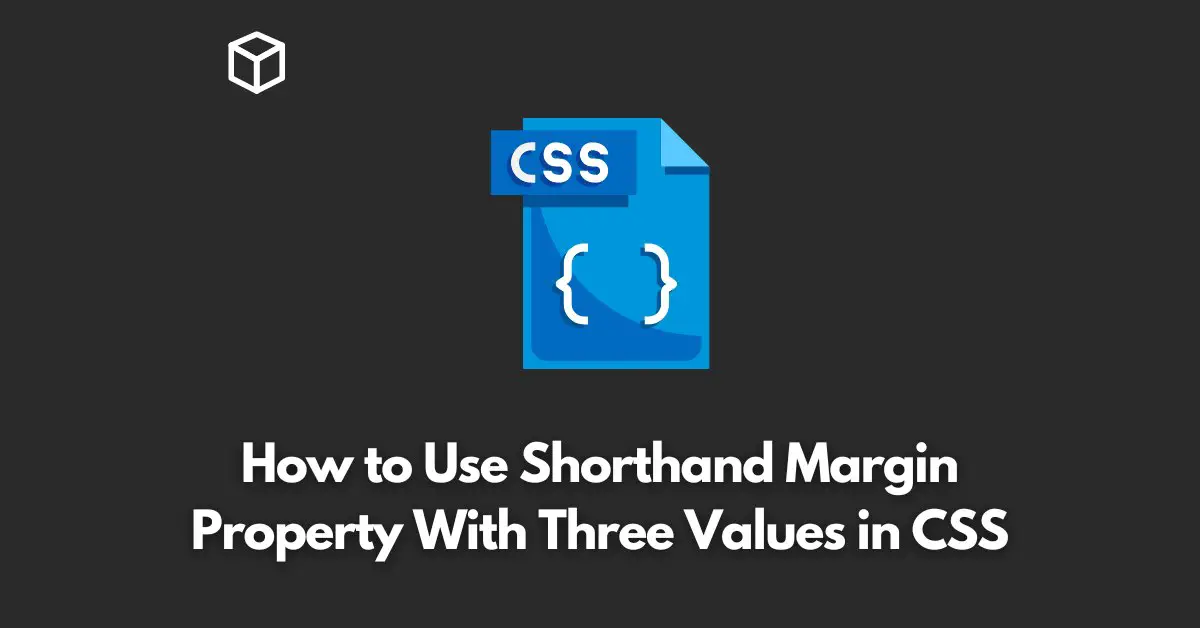CSS margin property allows you to add space around an HTML element.
It is a shorthand property that can take up to four values, but in this CSS tutorial, we will focus on using it with three values.
The shorthand margin property can be written in the following format:
margin: top right bottom left;
In this format, the first value represents the top margin, the second value represents the right margin, the third value represents the bottom margin, and the fourth value represents the left margin.
When using the shorthand margin property with three values, the first value represents the top margin, the second value represents the right and left margins, and the third value represents the bottom margin.
This is useful when you want to set the top and bottom margins to different values, but the right and left margins to the same value.
Here is an example of how you can use the shorthand margin property with three values:
.example {
margin: 10px 20px 30px;
}In this example, the top margin is set to 10px, the right and left margins are set to 20px, and the bottom margin is set to 30px.
You can also use negative values for the margin property. Negative values will make the element overlap with the neighboring elements.
.example {
margin: -10px 20px -20px;
}In this example, the top margin is set to -10px, the right and left margins are set to 20px, and the bottom margin is set to -20px.
In conclusion, the shorthand margin property is a convenient way to add space around an HTML element, and using it with three values allows you to set different margins for the top and bottom while keeping the right and left margins the same.
You can also use negative values to make an element overlap with neighboring elements.
Note: The shorthand margin property is a convenient way to add space around an HTML element.
Using it with three values allows you to set different margins for the top and bottom while keeping the right and left margins the same.




